Gone are the days when software product development is done using traditional approaches such as the waterfall, V-model, spiral model, etc. They have their own drawbacks, such as resistance to adaptation to changes, long duration, etc. Today, client requirements change over time based on market scenarios, customer expectations, etc. So, software product development must be dynamic and adjust to the changing demands. That's why agile product development has become the buzzword in the software development industry in recent years.
This way, the Scrum framework is one of the robust Agile methodologies with which you can accelerate product development and deliver expected products. You can monitor the progress of the product development during the development process itself. It means you can verify the functionalities of the product features before the final product release. On top of all, you can adjust product goals and roadmap with an agile approach if they will bring out the expected results.
Every scrum team has three vital roles: Scrum Master, Product Owner, and Developers. Of the three roles, product owners play a crucial role in product design, development, and release. That’s why there is much demand for product owners in the job market.
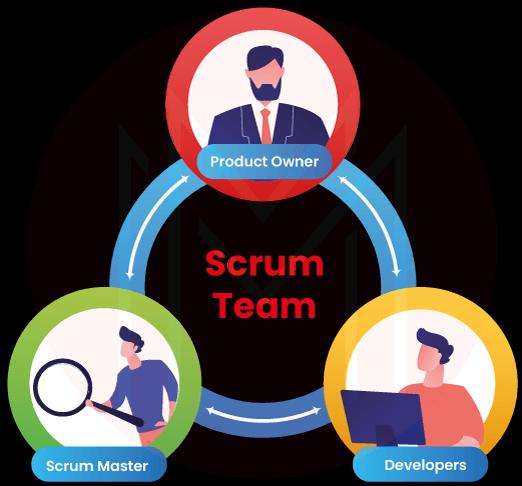
This blog provides the key Product Owner interview questions with answers. Read them from top to bottom to crack your interview confidently. We have categorized the questions and answers into three sections:
Top 10 Frequently Asked Product Owner Interview Questions
- What is Scrum Framework?
- What do you mean by the role of the product owner?
- A Product Owner and a Product Manager
- Product Owner and Scrum Master?
- What do you mean by Product Roadmap, and who creates a Roadmap?
- What do you mean by Product Discovery Process and how a Product Owner involves in it?
- How would a Product Owner ensure the quality of a product?
- What do you mean by Velocity, and how will it help Product Owners?
- Why is System thinking essential for product owners?
- What are the challenges of a Product Owner?
Product Owner Interview Questions and Answers for Freshers
1. What do you mean by the Agile model?
It is an iterative method of software product development. Every iteration is a short period that will last for approximately 2 to 4 weeks. This method divides the project into multiple modules with specific goals and limited time frames. This means every product development iteration will deliver a particular product functionality. Finally, all the functionalities are combined together to release a final product.
| If you want to enrich your career and become a professional in Scrum, then visit Mindmajix - a global online training platform: "Scrum Training" This course will help you to achieve excellence in this domain. |
2. What is Scrum Framework?
The Scrum framework is a project management tool that encourages teamwork and incremental progress. This tool simplifies product development by enabling teams to work together. Not only that, this tool supports the development team to move towards the goal rapidly. When teams work with the scrum framework, they are clearly informed of the product goals, product backlog items, sprint plans, sprint backlog items, and mainly the development progress. In short, the Scrum framework provides transparency, inspection, and adaptation.
3. Outline the different roles in a Scrum Team.
Every scrum team has three key roles: Product Owners, developer team, and Scrum Masters.
- Development Team: They release increments for every scrum as well as the final product at the end of the development.
- Product Owner: They have a vision of the product and prioritize product backlog items accordingly. They are responsible for the development of products meeting the expectations of customers.
- Scrum Master: They support the Scrum team to deliver their best in developing a product. They are also known as project facilitators. Implementing scrum best practices is one of the vital roles of a Scrum Master. Generally, they will be good at collaboration and process improvement.
4. What is Sprint?
Sprint is the core of every agile development. Essentially, a sprint represents a time frame. Development teams need to complete spring backlogs within a sprint. A typical sprint lasts for over 30 days. The Teams can start a new sprint only when the previous sprint is over.
5. What do you mean by Spring goal, and who defines it?
A sprint goal is nothing but a specific functionality of a product that should be released at the end of a sprint. The product owner and the development team decide on the Sprint goal
6. What is a Product Backlog?
The product backlog has the list of works to be completed that are required to make a final product.
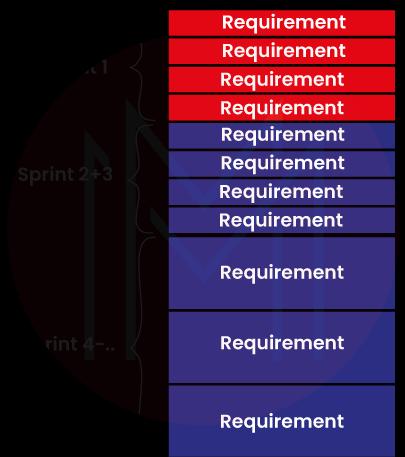
7. What do you mean by the role of the Product Owner?
The product owner is responsible for delivering products to customers' satisfaction. To achieve this, the product owner acts as the bridge between customers and the development team. Product owners understand customers' expectations and accurately communicate them to the development team.
Moreover, the Product owner is the one who sees the vision of a product for the very first time. The main thing is that product owners must prioritize backlog items technically. By doing so, product owners drive the development team to complete the product development, meeting customers' expectations on time.
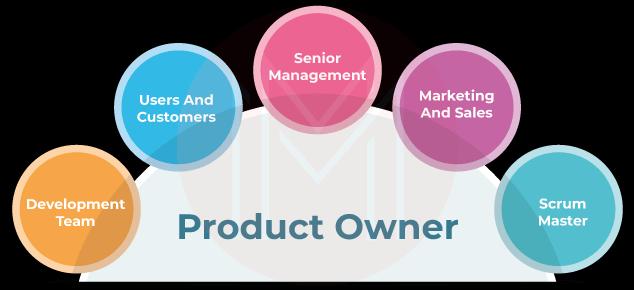
8. What is the use of the Burndown Chart?
Essentially, the burndown chart provides a graphical representation of the completed product backlogs and pending backlogs of a sprint. You can quickly study the sprint's progress through this chart in a single view. For example, the sprint is progressing well if you find more completed backlogs and only a few pending backlogs in a burndown chart.
Know that the Y-axis of every burndown chart shows the sprint product backlog items, and the X-axis shows the respective timelines. As the backlogs get completed, the graph moves downwards. The moment all backlogs are done, the graph will hit the X-axis.
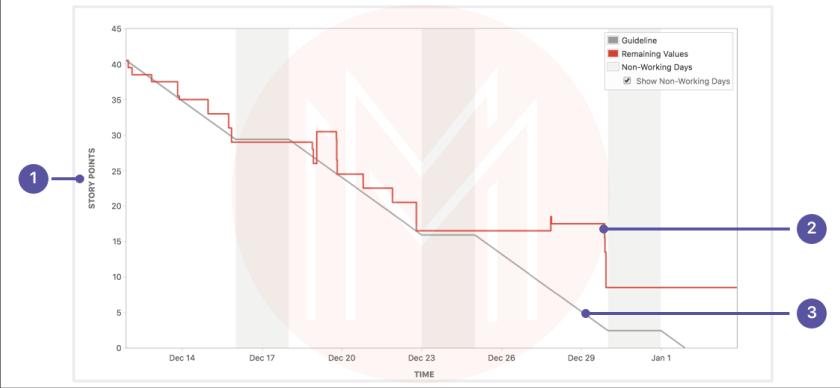
9. How can a Burndown Chart help a Product Owner?
A product owner can instantly pass the relevant feedback to the development team based on the insights he/she observed from the burndown chart. Also, they can decide when to release an increment or product.
10. What is the meaning of the Definition of Done?
DoD, or Definition of Done, specifies the quality requirements for an increment. An increment is nothing but a release of a sprint. It can only be finalized as the 'Done' task when an increment meets customers' specified quality expectations. Note that DoD can differ for every organization and team. Everyone in the team works together to meet the well-defined requirements of a product. As a whole, DoD encourages transparency and shared responsibility among scrum team members.
11. Compare: a Product Owner and Product Manager
| Product Owner | Product Manager |
| They mainly focus on product goals. A product owner acts as the voice of customers, indeed. | They focus on the entire product development process |
| They work closely with developers, stakeholders, and customers to imbibe the expectations of the product in-depth. So, they precisely direct development teams on what to do next and how. | They work closely with the development team to ensure work progress meets customer expectations. Simply put, they provide that the development process is moving in the right direction. |
12. What are the key functions of a Product Owner?
A product owner must:
- Manage and prioritize product backlogs
- Convert his/her product vision into respective tasks.
- Understand the expectations of stakeholders and customers accurately
- Collaborate with the development team and customers closely
- Define product backlog items clearly, as well as prioritize them in the right way
- Track work progress constantly and provide necessary guidance to the development team at the right time
- Deliver maximum product value, meeting the requirements of customers.
13. What are the skills required for a Product Owner?
- A product owner must have good domain knowledge. In other words, they should have good technical expertise. Only then, they can understand the product thoroughly.
- They should have good leadership qualities and communication skills. They must be capable of interacting with stakeholders as well as customers and understanding their needs precisely.
- They should have good interpretation skills so that they can share the expectations of customers with the development team without any deviation.
- On top of all, they should have good project management skills.
14. Differentiate: a Product Owner and Scrum Master?
| Product Owner | Scrum Master |
| They focus on product development based on the product backlog items. | They focus on product development based on the sprint backlogs |
| Monitor the work progress at every stage of the product development | Update the development team about work progress respective to sprint planning |
| Involve and remove impediments in the progress of product development. | Motivates development teams to be in line with sprint backlogs |
| Encourages analytical thinking, problem solving, etc., to development teams. | Encourages planning, self-organization, and implement agile methodologies. |
15. What do you mean by Acceptance Criteria? Who defines Acceptance Criteria?
Acceptance criteria are a set of conditions a software must meet to satisfy customer expectations. Every user story in a software product backlog will have its acceptance criteria. It means acceptance criteria will vary for every user story. Mainly, acceptance criteria are designed from the customer’s viewpoint.
The significant thing about acceptance criteria is that the development team must be well-informed about the acceptance criteria for a user story before they start working on it. This method completely avoids producing undesired results at the end of product development.
The product owner is the one who crafts the acceptance criteria in line with the user's expectations
16. What should be the qualities of a Product Owner?
A competent product owner should have the following qualities.
- A product owner should have strong communication skills
- They must understand the needs and requirements of customers accurately
- They should think strategically to solve problems and meet product goal.
17. What are the different roles required for cross-functional product development?
A product owner must employ the following roles to make cross-functional product development.
- Business analysts
- Data analysts
- UX and UI designers
- Developers, both front-end and back-end
- QA engineers
- DevOps engineers.
Product Owner Interview Questions and Answers for Experienced
18. What are the key differences between Scrum and Agile?
| Agile | Scrum |
| Essentially, agile is a philosophy | Scrum is one of the agile methodologies |
| Agile focuses only on goals | Scrum focuses on processes and divides the product goal into sprints. |
| The agile team consists of members from various teams | Scrum has specific roles such as product owner, scrum master, and developer team. |
19. What do you mean by Product Roadmap, and who creates a Roadmap?
In its basic form, a Product roadmap is an action plan that includes all the stages of product development along with their respective timelines. In other words, it has all the product features, the plans and strategies to develop the product, and the timelines to release the features. You can break a product roadmap down to the development team’s day-to-day activities.
Generally, a product owner creates the roadmap. While building a roadmap, the product owner deeply analyses various crucial external factors such as market conditions, value propositions, and other associated constraints and designs the roadmap accordingly.
20. How would you develop a suitable product Roadmap?
- First, you must create a robust strategy to establish a product roadmap. You must clearly define the product goals, different functionalities, and timelines.
- Once the strategy, goals, and features are defined, you must review the effectiveness and realization with stakeholders as well as customers elaborately. After that, you can make changes to those mentioned above and finalize them.
- You should include epics that represent the large modules of works. Every epic may have many releases.
- Then, you need to organize releases for various features and the respective timelines. It means that you must prioritize the release of the features.
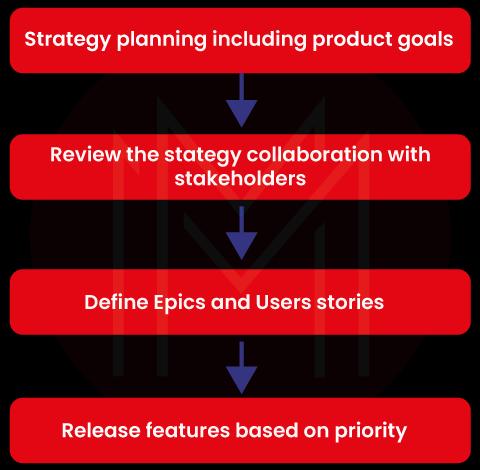
21. What techniques can a Product Owner use to manage backlog prioritization?
A product owner can use four techniques to manage backlog prioritization. They are given as follows:
- Stack Ranking
- MoSCoW Method
- Kano Model
- Cost of Delay.
22. What are the different Agile estimation techniques a Product Owner can use?
- Three-point estimate
- Affinity grouping
- Planning poker
- Buckets
- Random distribution
- Dot voting.
23. How can a Product Owner streamline the progress of a development team?
- A product owner makes the product backlog entirely visible as well as transparent.
- They ensure that the development team understands the product backlog items in detail.
- They should implement suitable practices and techniques to optimize the work.
24. What do you mean by Product Discovery Process and how a Product Owner involves in it?
The product discovery process involves understanding and developing a product as customers expect. This process has two essential stages such as exploration as well as validation. A product owner plays a pivotal role in the product discovery process.
In the exploration stage, a product owner collaborates with stakeholders to understand the product expectations and identify potential issues in product development. Not only that, the product owner evaluates the existing products thoroughly to get more understanding.
In the validation stage, the information gathered in the exploration stage is validated with data and customer feedback.
25. How does a Product Owner perform Product Backlog Refinement?
- First and foremost, a product owner analyses customer feedback data for product increment.
- Once data analysis is over, the product owner arrives at specific conclusions. The conclusions can be the addition or removal of items or adjusting items in the backlog, such as design sketches, epics, etc. Sometimes, there might be a need to change even the product roadmap. A product owner does this based on the requirements.
- Next, a product owner plans the next sprint incorporating the changes made in the product backlog in the earlier stage.
- Then, the product owner refines the product backlog items based on the conclusions arrived at the earlier stages.
- Finally, they prioritize the backlog items and communicate with the relevant teams.
26. How a ‘User Story Mapping’ method can help product owners for efficient product development?
User story mapping is a method product owners can use to convert the product vision into a perfect product roadmap. Using the user story mapping technique, a product owner understands customers' journeys when using a product. As a result, they prioritize backlog items, identify the risks, and identify solutions effectively. Also, they can break the product design into epics and user stories more precisely. So, teams can view the clear picture of the product and be clear with what product they will build.
27. What pitfalls may a Product Owner encounter while making a Product Backlog Refinement?
Following are the mistakes a product owner can make in the product backlog refinement process.
- A product owner may create a low-quality product backlog
- A product owner may add many details to the product backlog
- They may miss to include stakeholders in the refinement process.
28. How would a Product Owner ensure the quality of a product?
- The product owner set realizable goals for sprints.
- They must ensure that the development team uses efficient testing methods
- They collaborate closely with the development team to update feedback from customers and stakeholders, which will help to deliver a quality product.
29. What are the scrum events a product owner must attend?
A product owner must attend daily scrums, sprint reviews, sprint planning, and sprint retrospectives. This is because the product owner can ensure whether the development process is in line with the expectations, identify obstacles to the progress, etc. Knowing everything happening in product development, the product owner can quickly solve problems and speed up the entire process.
Advanced Product Owner Interview Questions and Answers
30. What are the key differences between the Definition of Done and the Definition of Ready?
| Definition of Ready (DoR) | Definition of Done (DoD) |
| It deals with the product requirements at the initial stages of product development. | It deals with product releases in the form of increments. |
| It includes user stories. All Team members are aware of epics as well as user stories in-depth. | It includes a working product. All team members how an increment works and about its quality. |
| It is designed based on performance criteria. | It is designed based on the acceptance criteria. |
31. Can a Product Owner cancel a Sprint?
Yes. A product owner cancels a sprint. They cancel a sprint when a sprint goal is not aligned with the product goal.
32. What do you mean by Velocity, and how will it help Product Owners?
Velocity represents the volume of work a scrum team can manage in a sprint. In other words, Velocity represents the number of product backlogs completed to release an increment. Considering the Velocity of sprints, a product owner decides whether to change the release timelines. Besides, product owners can effectively plan the next sprint with the help of velocity figures.
33. Why is System Thinking essential for Product Owners?
- System thinking allows product owners to resolve dynamic social systems complexities quickly.
- It encourages product owners to take every problem as an opportunity.
- System thinking is much more future-focused. So, product owners anticipate future outcomes and make suitable adaptations.
- With system thinking, product owners can remove unwanted steps in the development process and optimize the development process.
34. What are the challenges of a Product Owner?
- It is difficult to collaborate with all stakeholders and conclude the product expectations.
- Another thing is that managing distributed teams remotely. Nowadays, teams are working from different locations, so it is always challenging to collaborate with them and work towards a common goal.
- Changing the product requirements will change the entire development process. So, product owners feel difficulty in adapting to changes in product requirements.
- Another crucial challenge is backlog prioritization. Effective backlog prioritization will result in the production of quality products on time.
35. What kind of approach must a Product Owner keep communicating with a client?
A product owner should be open to communicating with clients throughout the product lifecycle. It will help product owners understand clients' needs and develop products that meet entirely clients' requirements. Besides, the product owner must be capable of briefing the technical aspects of products to clients in an understandable manner.
Conclusion
Now, it's time to wrap! We hope this blog helped you to boost your confidence on the subject significantly. Remember, winning a game doesn’t happen with an overnight effort. It demands continuous focus, gapless practice, and unshaken confidence. If you want to crack the product owner interview, you must sharpen your knowledge with good practice to shine better and better. So, you keep reading the product owner's questions and answers repeatedly to become familiar with the subject.
 On-Job Support Service
On-Job Support Service
Online Work Support for your on-job roles.

Our work-support plans provide precise options as per your project tasks. Whether you are a newbie or an experienced professional seeking assistance in completing project tasks, we are here with the following plans to meet your custom needs:
- Pay Per Hour
- Pay Per Week
- Monthly
| Name | Dates | |
|---|---|---|
| Scrum Training | Jan 10 to Jan 25 | View Details |
| Scrum Training | Jan 13 to Jan 28 | View Details |
| Scrum Training | Jan 17 to Feb 01 | View Details |
| Scrum Training | Jan 20 to Feb 04 | View Details |

Madhuri is a Senior Content Creator at MindMajix. She has written about a range of different topics on various technologies, which include, Splunk, Tensorflow, Selenium, and CEH. She spends most of her time researching on technology, and startups. Connect with her via LinkedIn and Twitter .














